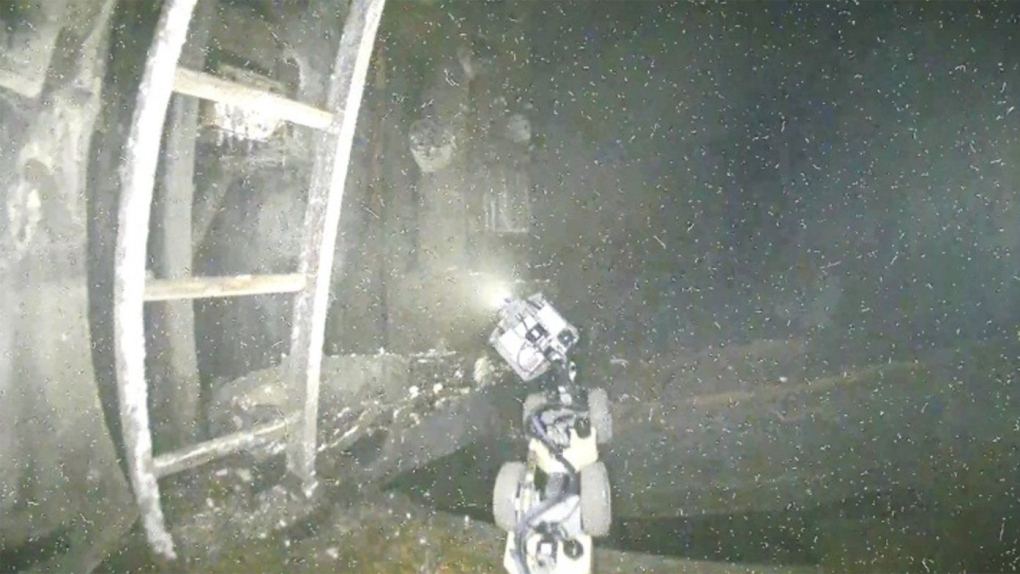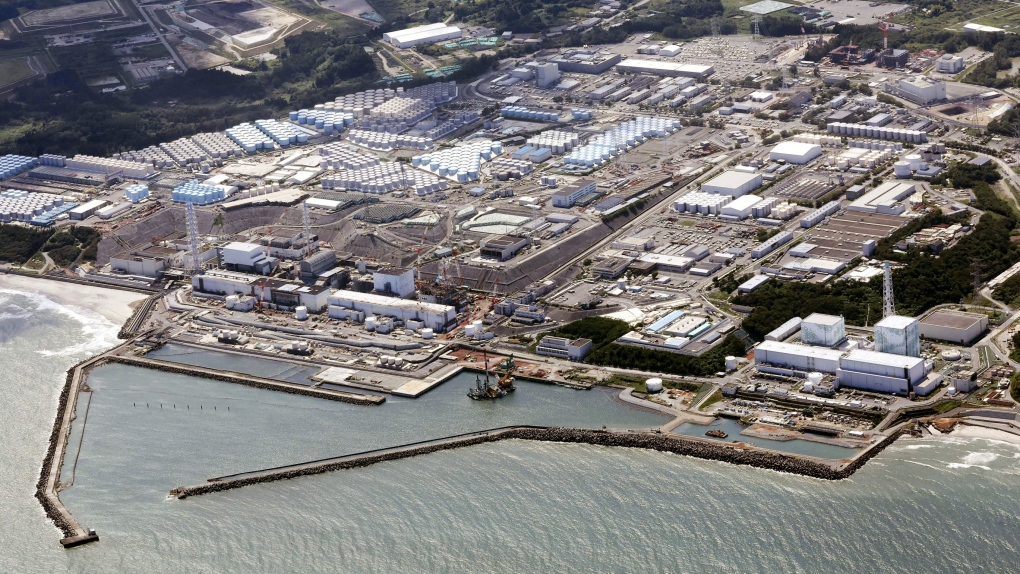Images taken by miniature drones from deep inside a badly damaged reactor at the Fukushima nuclear plant show displaced control equipment and misshapen materials but leave many questions unanswered, underscoring the daunting task of decommissioning the plant.
The 12 photos released by the plant’s operator are the first from inside the main structural support called the pedestal in the hardest-hit No. 1 reactor’s primary containment vessel, an area directly under the reactor’s core. Officials had long hoped to reach the area to examine the core and melted nuclear fuel which dripped there when the plant’s cooling systems were damaged by a massive earthquake and tsunami in 2011.
Earlier attempts with robots were unable to reach the area. The two-day probe using tiny drones was completed last week by Tokyo Electric Power Company Holdings, or TEPCO, which released the photos on Monday.
About 880 tons of highly radioactive melted nuclear fuel remain inside the three damaged reactors. TEPCO is attempting to learn more about its location and condition to facilitate its removal so the plant can be decommissioned.
 This image taken by a drone and provided by Tokyo Electric Power Company Holdings (TEPCO) shows the snake-shaped robot designed to assist a drone inside the No. 1 reactor as a drone probes inside of the worst-hit reactor at the wrecked Fukushima Daiichi nuclear power plant in Okuma town, northeastern Japan, on March 14, 2024. (TEPCO via AP)
This image taken by a drone and provided by Tokyo Electric Power Company Holdings (TEPCO) shows the snake-shaped robot designed to assist a drone inside the No. 1 reactor as a drone probes inside of the worst-hit reactor at the wrecked Fukushima Daiichi nuclear power plant in Okuma town, northeastern Japan, on March 14, 2024. (TEPCO via AP)
The high-definition color images captured by the drones show brown objects with various shapes and sizes dangling from various locations in the pedestal. Parts of the control-rod drive mechanism, which controls the nuclear chain reaction, and other equipment attached to the core were dislodged.
TEPCO officials said they were unable to tell from the images whether the dangling lumps were melted fuel or melted equipment without obtaining other data such as radiation levels. The drones did not carry dosimeters to measure radiation because they had to be lightweight and maneuverable.
The drone cameras could not see the bottom of the reactor core, in part because of the darkness of the containment vessel, officials said. Information from the probe could help future investigations of the melted debris which are key to developing technologies and robots for its removal, they said.
 This image was taken a drone and provided by Tokyo Electric Power Company Holdings (TEPCO) shows displaced equipment and misshapen materials inside the No. 1 reactor as a drone probes the inside of the worst-hit reactor at the wrecked Fukushima Daiichi nuclear power plant in Okuma town, northeastern Japan, on March 14, 2024. Images taken by two miniature drones sent inside a badly damaged reactor at the Fukushima nuclear plant show displaced key control equipment and other materials but leave many questions unanswered, underscoring the daunting task of decommissioning the plant.(TEPCO via AP)
This image was taken a drone and provided by Tokyo Electric Power Company Holdings (TEPCO) shows displaced equipment and misshapen materials inside the No. 1 reactor as a drone probes the inside of the worst-hit reactor at the wrecked Fukushima Daiichi nuclear power plant in Okuma town, northeastern Japan, on March 14, 2024. Images taken by two miniature drones sent inside a badly damaged reactor at the Fukushima nuclear plant show displaced key control equipment and other materials but leave many questions unanswered, underscoring the daunting task of decommissioning the plant.(TEPCO via AP)
But the large amount that remains unknown about the interior of the reactors suggests how difficult it will be. Critics say the 30-40 year target for the plant’s cleanup set by the government and TEPCO is overly optimistic.
The daunting decommissioning process has already been delayed for years by technical hurdles and the lack of data.







